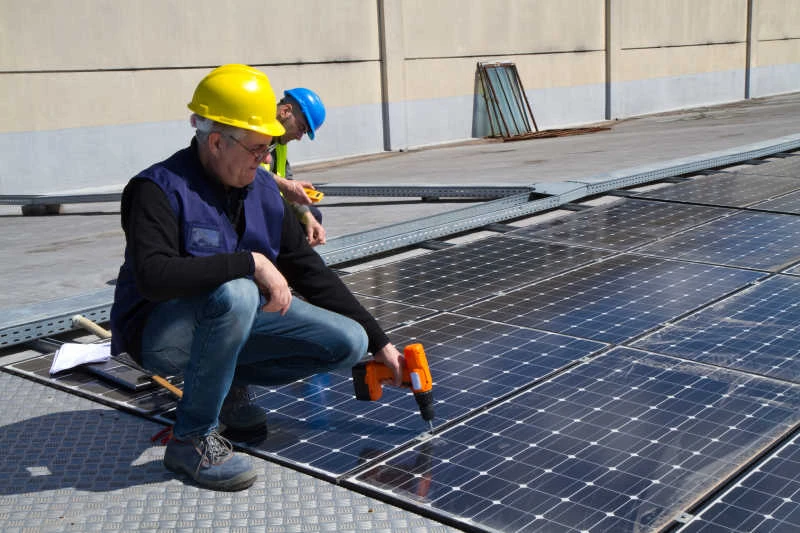Average Dimensions of Solar Panels and Their Impact on Installation Choices
Understanding the Average Size of Solar Panels
As the world increasingly shifts towards renewable energy sources, solar panels have surfaced as a popular option for harnessing solar energy. Their efficiency and cost-effectiveness have made them a staple in both residential and commercial energy systems. However, a common question arises regarding the average size of solar panels and how this size impacts energy production and installation.
What is the Average Size of Solar Panels?
Typically, the average solar panel measures about 65 inches by 39 inches, translating to roughly 17.6 square feet in area. This size is standard for most residential solar panels, particularly those made from monocrystalline or polycrystalline silicon. These dimensions allow for an optimal balance between efficiency and ease of installation.
Moreover, the wattage output of solar panels varies from about 250 watts to 400 watts per panel, depending on the technology used and the manufacturer. For instance, high-efficiency panels, often made from monocrystalline silicon, tend to be slightly smaller while offering higher output compared to their polycrystalline counterparts.
Factors Influencing Solar Panel Size
The size of solar panels can be influenced by several factors, including technological advancements, energy output requirements, and the space available for installation
.1. Technology Over the years, solar panel technology has evolved significantly. New materials and designs have led to higher efficiency rates, meaning panels can generate more electricity in a smaller footprint. For example, thin-film solar panels are more flexible and lightweight, allowing them to be used in various applications, although they tend to have lower efficiency and require more space.
2. Energy Requirements The energy needs of a household or business will dictate the number of panels required. For homes with lower energy consumption, fewer panels may be necessary, whereas larger homes or businesses may require a more extensive array, which in turn may lead to the installation of higher wattage panels to reduce the overall number.
solar panel average size

3. Installation Space The available roof space or ground area for installation is another crucial factor. Urban environments may lead homeowners to select more compact, efficient panels that fit limited spaces, whereas rural properties might accommodate traditional-sized solar panels without constraints.
Impact of Solar Panel Size on Installation
When considering the installation of solar panels, their size is a critical factor. The larger the panel, the more energy it can potentially generate. However, larger panels can also pose challenges in terms of weight, structural integrity, and installation logistics.
In addition, solar panel size impacts the layout and the number of panels that can be effectively installed on a roof. Solar installers will often conduct a detailed analysis of the building structure to determine how many panels can fit and whether any additional support or modifications are necessary.
Future Trends and Innovations
As the renewable energy sector continues to innovate, we can expect the average size and shape of solar panels to change. Emerging technologies, such as building-integrated photovoltaics (BIPV), offer designs that combine aesthetics with functionality, potentially leading to smaller, more versatile panels.
Moreover, as efficiency improves, the industry may see a trend towards fewer, more powerful panels rather than traditional arrays composed of multiple smaller panels. This could lead to installations that are not only more energy-efficient but also visually appealing and easier to manage.
Conclusion
Understanding the average size of solar panels is essential for anyone considering the implementation of solar energy solutions. While the typical panel size of around 17.6 square feet holds true for many installations, technological advancements and individual energy needs will continue to shape the landscape of solar panel sizes. As we move towards a more sustainable future, the evolution of solar technologies will play a crucial role in maximizing efficiency, minimizing environmental impact, and promoting widespread adoption of renewable energy worldwide.
-
String Solar Inverter: The High-Efficiency Solution for Smart Solar EnergyNewsJul.14,2025
-
Revolutionizing Rooftop Energy with the Power of the Micro Solar InverterNewsJul.14,2025
-
Power Independence with Smart Off Grid Solar Inverter SolutionsNewsJul.14,2025
-
On Grid Solar Inverter: Powering the Future with Smart Grid IntegrationNewsJul.14,2025
-
Monocrystalline Solar Panels: High-Efficiency Power for the Future of Clean EnergyNewsJul.14,2025
-
Bifacial Solar Panel: A Smarter Investment for Next-Generation Energy SystemsNewsJul.14,2025







